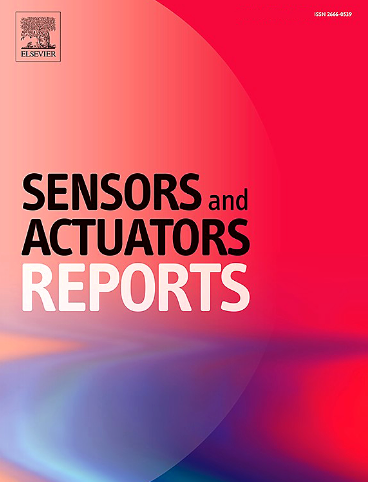Bipolar electrochemically generated fluorescence detector for microchip electrophoresis with and without a potentiostat: Application to reducible analyte detection
IF 7.6
Q1 BIOTECHNOLOGY & APPLIED MICROBIOLOGY
引用次数: 0
Abstract
Microchip electrophoresis (ME) is a separation method that makes it possible to quickly analyze multiple species in small volume samples in a miniaturized format. Two commonly employed detection approaches for ME are electrochemistry and fluorescence. Electrochemical detection can be employed for direct detection of analytes via redox chemistry, while fluorescence generally offers lower limits of detection but often requires analyte derivatization. The present study uses bipolar electrochemistry to couple the two detection methods into a single device as a detector for that encompasses the advantages of both techniques. This system employs a closed bipolar electrode (BPE) that converts the cathodic amperometric current produced at the separation (sensing) pole to a fluorescence response generated at the reporting pole. Two model analytes, benzoquinone and resazurin, were separated and detected using ME with reductive amperometric detection at the sensing pole of the BPE. A potentiostat was used to control the bipolar electrode. The response was then converted to fluorescence through the oxidation of 2,7-dichlorodihydrofluorescein in the reporting channel. This system was subsequently modified to run without a potentiostat by using the separation voltage to bias the BPE sensing pole. A voltage applied across the reporting channel was used to generate electroosmotic flow as well as bias the corresponding pole of the BPE. This potentiostat-free mode was evaluated for the determination of 3-nitro-l-tyrosine, a reducible biomarker of oxidative stress. Lastly, a sacrificial electrochemically active species, Trolox®, was incorporated into the reporting channel to compensate for background current at the sensing channel and lower the limits of detection.

带或不带恒电位器的微芯片电泳用双极电化学荧光检测器:在可还原分析物检测中的应用
微芯片电泳(ME)是一种分离方法,使快速分析多种物种的小体积样品在一个小型化的格式。两种常用的检测ME的方法是电化学和荧光。电化学检测可用于通过氧化还原化学直接检测分析物,而荧光通常提供较低的检测限,但通常需要分析物衍生化。目前的研究使用双极电化学将两种检测方法耦合到一个单一的设备中作为检测器,因为它包含了两种技术的优点。该系统采用封闭双极电极(BPE),将分离(传感)极产生的阴极安培电流转换为报告极产生的荧光响应。两种模型分析物,苯醌和瑞祖啉,在BPE的传感极用还原性安培检测分离和检测。用恒电位器控制双极电极。然后通过报告通道中2,7-二氯二氢荧光素的氧化将反应转化为荧光。随后,通过使用分离电压偏置BPE传感极,对该系统进行了修改,使其无需恒电位器即可运行。施加在报告通道上的电压被用来产生电渗透流,并使BPE的相应极偏压。这种无恒电位模式被评估用于测定3-硝基-l-酪氨酸,一种氧化应激的可还原生物标志物。最后,在报告通道中加入牺牲电化学活性物质Trolox®,以补偿传感通道的背景电流并降低检测限。
本文章由计算机程序翻译,如有差异,请以英文原文为准。
求助全文
约1分钟内获得全文
求助全文
来源期刊

Sensors and Actuators Reports
Multiple-
CiteScore
9.60
自引率
0.00%
发文量
60
审稿时长
49 days
期刊介绍:
Sensors and Actuators Reports is a peer-reviewed open access journal launched out from the Sensors and Actuators journal family. Sensors and Actuators Reports is dedicated to publishing new and original works in the field of all type of sensors and actuators, including bio-, chemical-, physical-, and nano- sensors and actuators, which demonstrates significant progress beyond the current state of the art. The journal regularly publishes original research papers, reviews, and short communications.
For research papers and short communications, the journal aims to publish the new and original work supported by experimental results and as such purely theoretical works are not accepted.
 求助内容:
求助内容: 应助结果提醒方式:
应助结果提醒方式:


